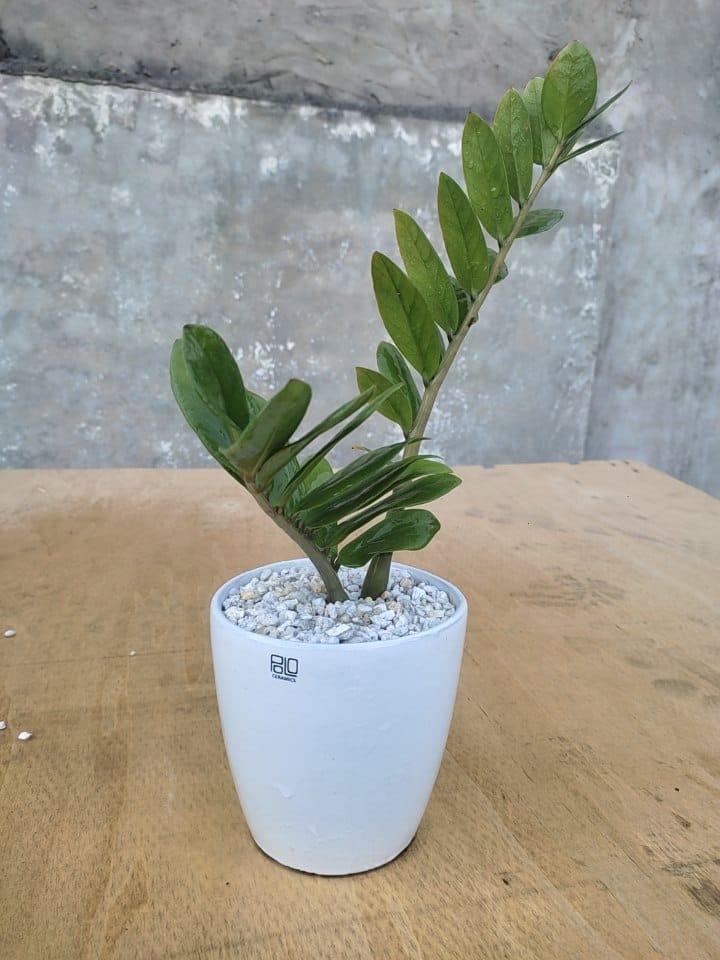A Beginner’s Guide to Plant Care

Bringing a plant into your home offers benefits like adding nature, purifying air, and brightening your space, though keeping them alive can be challenging. This guide aims to help anyone develop a green thumb by covering plant care fundamentals, from basic needs to common problems, to help indoor gardens flourish.
Understanding Your Plant’s Needs
Every plant is unique, but most have four fundamental requirements: light, water, soil, and the right temperature. Getting these basics right is the foundation of successful plant parenthood.
Light
Light is food for plants. They use it for photosynthesis, the process of converting light into energy. Different plants have evolved to thrive in different light conditions.
- Direct Sunlight: Plants like succulents, cacti, and palms love several hours of direct sun each day. A south-facing window is often the best spot for them.
- Bright, Indirect Light: This is the sweet spot for many popular houseplants, including monsteras, fiddle leaf figs, and pothos. They need bright light but can get scorched by direct sun. An east-facing window or a spot a few feet back from a south- or west-facing window is ideal.
- Low Light: Some plants, such as snake plants, ZZ plants, and some ferns, can tolerate lower light conditions. They are perfect for rooms with north-facing windows or corners that don’t get much sun.
Water
Watering is where many new plant owners go wrong. Both too much and too little water can be fatal. The key is to understand your specific plant’s needs and to check the soil before you water. A good rule of thumb is to stick your finger about an inch or two into the soil. If it feels dry, it’s time to water.
- Drought-Tolerant Plants: Succulents and cacti prefer their soil to dry out completely between waterings.
- Moisture-Loving Plants: Ferns and calatheas like their soil to remain consistently moist, but not waterlogged.
- Moderate Waterers: Most common houseplants fall somewhere in between, preferring the top inch or two of soil to dry out before their next drink.
Soil
The right soil provides your plant with essential nutrients, aeration for its roots, and proper drainage. Using all-purpose potting mix from a garden store is a good start, but some plants have more specific needs.
- Cacti and Succulents: Require a fast-draining mix, often labeled as “cactus mix,” which contains more sand or perlite.
- Orchids: Thrive in a very chunky, bark-based medium that allows for plenty of air circulation around their roots.
- African Violets: Prefer a light, fluffy mix that retains moisture without becoming soggy.
Temperature and Humidity
Most houseplants are tropical in origin and prefer conditions that mimic their native environment. They generally thrive in temperatures between 65-75°F (18-24°C). Avoid placing them near drafts, open windows in winter, or direct heat sources like radiators. Many also appreciate higher humidity, which you can provide by misting them, using a humidifier, or placing them on a pebble tray with water.
Common Plant Care Mistakes
Even with the best intentions, mistakes happen. Here are a few common pitfalls and how to avoid them.
- Overwatering: This is the most common cause of plant death. Overwatering suffocates the roots, leading to root rot. Signs include yellowing leaves, a mushy stem, and wilted foliage despite moist soil. Always check the soil before watering.
- Underwatering: Forgetting to water is also a problem. Signs include crispy, brown leaf edges, drooping, and dry, pulling soil. Setting a reminder can help you stay on schedule.
- Incorrect Lighting: A plant in the wrong light will struggle. Too little light leads to leggy, weak growth and a lack of vibrancy. Too much direct light can scorch leaves, leaving brown or white patches. Observe your plant and be prepared to move it if it looks unhappy.
Pest and Disease Control
Pests are an unfortunate but manageable part of plant ownership. Check your plants regularly for any signs of trouble. Common culprits include:
- Spider Mites: Tiny arachnids that create fine webbing, usually on the underside of leaves. They cause stippling or yellow dots.
- Mealybugs: Small, white, cottony insects that cluster in leaf axils and other hidden spots.
- Fungus Gnats: Small flies that buzz around your plants. Their larvae live in the top layer of moist soil.
To treat most common pests, start by isolating the infected plant. You can often remove pests by wiping them off with a cloth dipped in rubbing alcohol or by spraying the plant with insecticidal soap or neem oil.
Seasonal Plant Care
A plant’s needs change with the seasons.
- Spring and Summer: This is the growing season. Your plants will need more water and may benefit from a balanced fertilizer every 2-4 weeks to support new growth.
- Fall and Winter: Growth slows down significantly. Reduce watering, allowing the soil to dry out more between sessions, and stop fertilizing until spring.
Finding the Right Plants
Choosing plants that suit your lifestyle and home environment is the first step to success. If you have a busy schedule or are new to plants, start with low-maintenance options like a snake plant, pothos, or ZZ plant. These are forgiving and can tolerate a bit of neglect.
You can find a wide variety of plants at local nurseries and garden stores like those in Salt Lake City, as well as online retailers. Don’t be afraid to ask for advice—the staff can often provide valuable tips for the specific plants you’re interested in.
Conclusion
Now that you have a better understanding of the benefits and importance of indoor plants, it’s time to start incorporating them into your living space. Remember to choose plants that fit your lifestyle and level of care, and don’t be afraid to seek guidance from experts or online resources.
